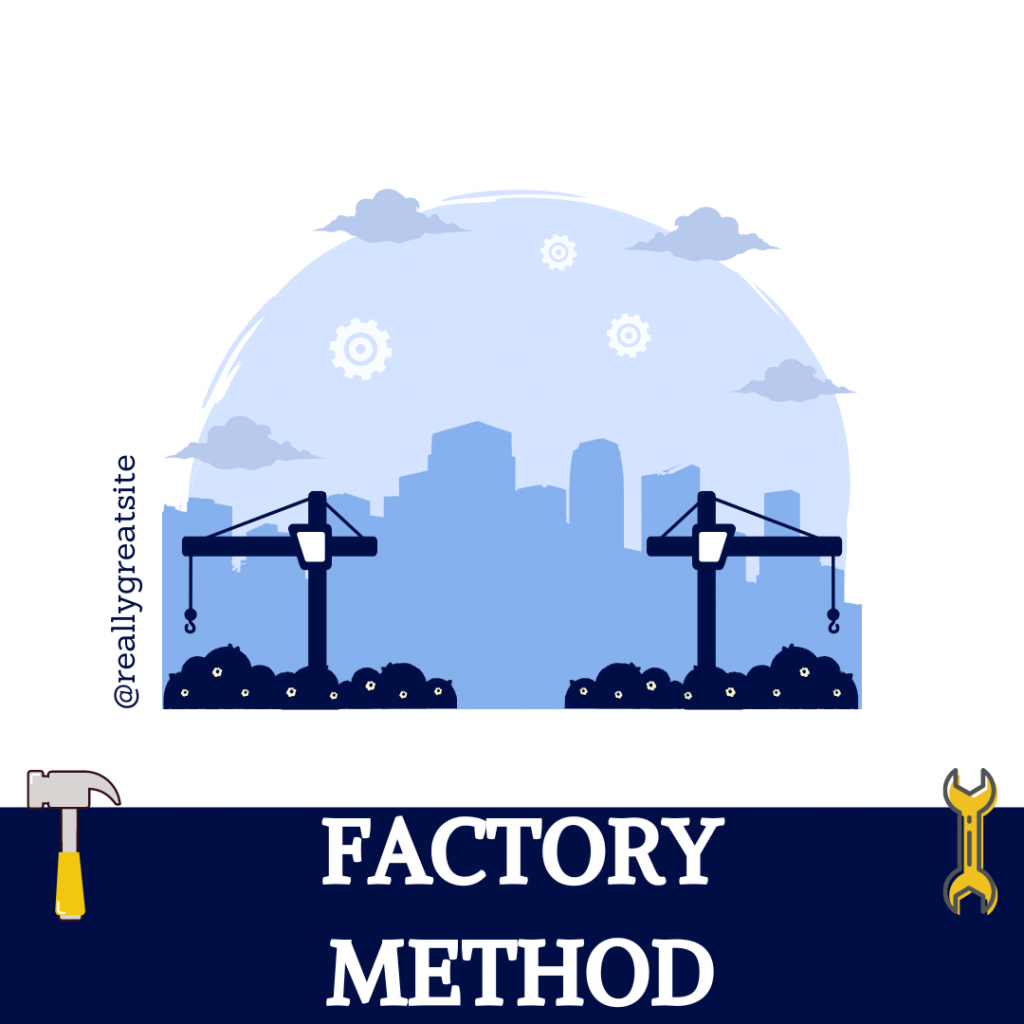
Factory Method
Factory Method is a creational design pattern that provides an interface for creating objects in a superclass, but allows subclasses to alter the type of objects that will be created.
Use the Factory Method when you don’t know beforehand the exact types and dependencies of the objects your code should work with.
Use the Factory Method when you want to provide users of your library or framework with a way to extend its internal components.
Use the Factory Method when you want to save system resources by reusing existing objects instead of rebuilding them each time.
Pros
– You avoid tight coupling between the creator and the concrete products.
– Single Responsibility Principle. You can move the product creation code into one place in the program, making the code easier to support.
– Open/Closed Principle. You can introduce new types of products into the program without breaking existing client code.
Cons
The code may become more complicated since you need to introduce a lot of new subclasses to implement the pattern. The best case scenario is when you’re introducing the pattern into an existing hierarchy of creator classes.
From refactoring.guru
Consseptual Example:
/// The Creator protocol declares the factory method that's supposed to return a
/// new object of a Product class. The Creator's subclasses usually provide the
/// implementation of this method.
protocol Creator {
/// Note that the Creator may also provide some default implementation of
/// the factory method.
func factoryMethod() -> Product
/// Also note that, despite its name, the Creator's primary responsibility
/// is not creating products. Usually, it contains some core business logic
/// that relies on Product objects, returned by the factory method.
/// Subclasses can indirectly change that business logic by overriding the
/// factory method and returning a different type of product from it.
func someOperation() -> String
}
/// This extension implements the default behavior of the Creator. This behavior
/// can be overridden in subclasses.
extension Creator {
func someOperation() -> String {
// Call the factory method to create a Product object.
let product = factoryMethod()
// Now, use the product.
return "Creator: The same creator's code has just worked with "
+ product.operation()
}
}
/// Concrete Creators override the factory method in order to change the
/// resulting product's type.
class ConcreteCreator1: Creator {
/// Note that the signature of the method still uses the abstract product
/// type, even though the concrete product is actually returned from the
/// method. This way the Creator can stay independent of concrete product
/// classes.
public func factoryMethod() -> Product {
return ConcreteProduct1()
}
}
class ConcreteCreator2: Creator {
public func factoryMethod() -> Product {
return ConcreteProduct2()
}
}
/// The Product protocol declares the operations that all concrete products must
/// implement.
protocol Product {
func operation() -> String
}
/// Concrete Products provide various implementations of the Product protocol.
class ConcreteProduct1: Product {
func operation() -> String {
return "{Result of the ConcreteProduct1}"
}
}
class ConcreteProduct2: Product {
func operation() -> String {
return "{Result of the ConcreteProduct2}"
}
}
/// The client code works with an instance of a concrete creator, albeit through
/// its base protocol. As long as the client keeps working with the creator via
/// the base protocol, you can pass it any creator's subclass.
class Client {
// ...
static func someClientCode(creator: Creator) {
print("Client: I'm not aware of the creator's class, but it still works.\n"
+ creator.someOperation())
}
// ...
}
/// Let's see how it all works together.
class FactoryMethodConceptual {
func testFactoryMethodConceptual() {
/// The Application picks a creator's type depending on the
/// configuration or environment.
print("App: Launched with the ConcreteCreator1.")
Client.someClientCode(creator: ConcreteCreator1())
print("\nApp: Launched with the ConcreteCreator2.")
Client.someClientCode(creator: ConcreteCreator2())
}
}